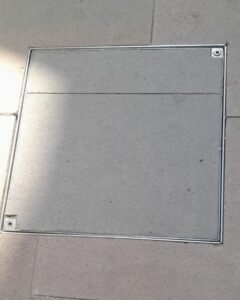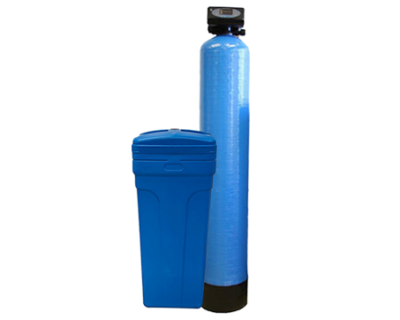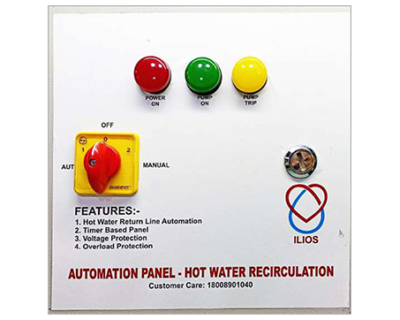Blog

Everything You Need to Know About Choosing the Right Manhole Covers
Choosing the right manhole covers might seem simple, but it can actually be quite tricky. If you don’t work with them every day, you might not realize just how many different types of manhole covers there are. They come in various sizes, shapes, and materials. Picking the wrong one or failing to replace a damaged cover can lead to big problems and extra costs.
Manhole covers are essential for keeping people and objects out of access points like drains and sewers. This blog will guide you through the important things to consider when selecting the right manhole covers.

Why Manhole Covers Matter
Manhole covers are not just simple metal plates. They play a crucial role in ensuring safety and functionality in our everyday environment. They cover openings that lead to underground pipes and cables. Without them, there would be a risk of accidents, unauthorized access, and damage to important infrastructure.
Types of Manhole Covers
There are several types of manhole covers, and each has its own specific uses. Here are some common types:
Solid Top Covers: These are the most common and are usually made of cast iron. They are strong and durable, making them suitable for heavy traffic areas.
Recessed Covers: These are designed to be filled with the same material as the surrounding area, like concrete or tiles. This makes them blend in and look more attractive.
Composite Covers: Made from materials like fiberglass, these covers are lightweight yet strong. They are also corrosion-resistant and electrically non-conductive.
Ductile Iron Covers: These are similar to cast iron covers but are more flexible and can handle greater loads without breaking.
Key Features of Recessed Manhole Covers
Recessed manhole covers are a popular choice because they offer several benefits:
Precision Manufacturing: These covers are made with extreme precision using advanced techniques. This guarantees an ideal fit and dependable performance.
Standard Sizes: Recessed manhole covers come in all standard sizes, making it easy to find one that fits your needs.
Load Capacity: They have a load capacity of up to 10 tonnes, making them suitable for various applications, including driveways and parking lots.
Shape and Seal Options: You can get them in square or rectangular shapes. They also come with single or double seal arrangements to prevent water and dirt from entering the access point.
High-Quality Materials: These covers are made from weather-resistant materials, ensuring they last long even in harsh conditions.
Choosing the Right Size
Choosing the correct size of manhole covers is crucial. If the cover is too small, it won’t fit properly and can be dangerous. If it’s too large, it might not stay in place securely. Measure the opening carefully and check the specifications of the cover before purchasing.
Importance of Material
The material of the manhole cover affects its durability, weight, and resistance to weather conditions. Here are some common materials used:
Cast Iron: Heavy and strong, suitable for high-traffic areas.
Ductile Iron: More flexible than cast iron and can handle greater stress.
Composite: Lightweight, non-corrosive, and non-conductive.
Steel: Strong but can be prone to rust if not properly treated.
Load Capacity
Understanding the load capacity is important to ensure the manhole covers can handle the weight they will be subjected to. A cover with a load capacity of 10 tonnes is generally sufficient for most residential and light commercial applications. For areas with heavier traffic, you might need a cover with a higher load capacity.
Sealing Options
Manhole covers come with different sealing options to keep out water and debris:
Single Seal: Suitable for areas where the risk of water ingress is low.
Double Seal: Provides extra protection against water and dirt, ideal for wet areas or where the cover is submerged.
Aesthetic Considerations
Recessed manhole covers can be filled with tiles or other materials to match the surrounding area. This makes them less noticeable and more attractive, especially in residential or landscaped areas.
Installation Tips
Proper installation is key to ensuring the manhole covers work effectively. Here are some tips:
Prepare the Area: Ensure the opening is clean and free from debris.
Check the Fit: Place the cover in the opening to check the fit before securing it.
Secure Properly: Use the appropriate tools and follow the manufacturer’s instructions to secure the cover in place.
Regular Maintenance: Inspect the covers regularly to check for any damage or wear and tear.
Benefits of High-Quality Manhole Covers
Investing in high-quality manhole covers can save you money and trouble in the long run. They offer several benefits:
Durability: High-quality materials and precision manufacturing ensure the covers last longer.
Safety: Properly fitted covers prevent accidents and unauthorized access.
Aesthetics: Recessed covers that blend with the surroundings enhance the appearance of the area.
Functionality: Reliable sealing and load capacity ensure the covers perform well under various conditions.
Conclusion
Choosing the right manhole covers is essential for safety, functionality, and aesthetics. By considering factors like size, material, load capacity, and sealing options, you can find the perfect cover for your needs. Recessed manhole covers, with their precision manufacturing and high-quality materials, offer a great solution for many applications. Remember to follow proper installation and maintenance practices to ensure your manhole covers provide long-lasting performance.
Invest in quality manhole covers to avoid costly repairs and ensure the safety and functionality of your access points. With the right information and careful selection, you can make the best choice for your specific requirements.




